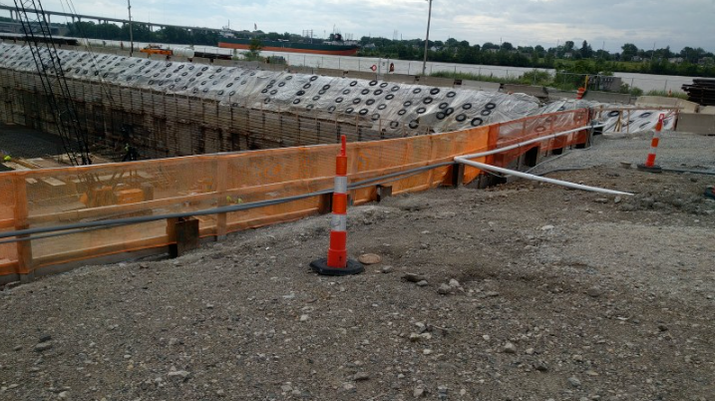Project Geotechnical Engineer Knowledge for Large-Scale Dope
Project Geotechnical Engineer Knowledge for Large-Scale Dope
Blog Article
How Consulting Engineers Enhance Geotechnical Design Projects: Insights Into Their Expertise, Approaches, and Collaborative Approaches
Consulting engineers are pivotal in improving geotechnical engineering jobs, applying their specialized understanding to navigate the intricacies of subsurface problems. Their techniques encompass an array of website examination strategies, consisting of Requirement Infiltration Tests (SPT) and Cone Penetration Examinations (CPT), which educate important decisions during the design and building phases. Their collective approaches foster interaction amongst varied project stakeholders, ultimately forming the task's trajectory. As we check out the multifaceted roles these professionals play, it becomes clear that their payments extend past technical know-how, prompting a more detailed consider the effects for project success.
Duty of Consulting Engineers
The experience of getting in touch with engineers in geotechnical design is essential to the successful implementation of construction tasks. These experts play a pivotal duty in evaluating dirt and rock properties, which are vital factors influencing layout and construction choices. By conducting extensive website investigations, consulting designers collect crucial data that educates the layout procedure, guaranteeing tasks are developed on secure and ideal ground.
Consulting designers additionally give important understandings right into risk management (geotechnical geologist). They recognize potential geotechnical risks, such as landslides, dirt liquefaction, and negotiation issues, enabling stakeholders to carry out efficient mitigation approaches. Their experience aids in enhancing structure layouts, which can bring about considerable cost savings and improved security
Furthermore, speaking with designers function as a vital link between project owners, engineers, and contractors. Their capacity to equate intricate geotechnical data into actionable recommendations fosters cooperation and assists in informed decision-making throughout the project lifecycle. This multidisciplinary method not only enhances project performance but additionally makes certain compliance with regulative criteria and ideal practices.
Secret Techniques in Geotechnical Engineering

One primary methodology is website investigation, which includes conducting field examinations and laboratory evaluations to collect data on subsurface problems. Strategies such as Criterion Infiltration Testing (SPT) and Cone Penetration Testing (CPT) are widely made use of to assess soil stratigraphy and strength. Additionally, geophysical approaches, including seismic and electric resistivity studies, provide non-invasive methods to assess subsurface characteristics.
Another important approach is mathematical modeling, which allows designers to mimic different situations and predict how soil-structure communications will act under various loading problems. Limited Aspect Analysis (FEA) is a typical method used in this context.
Additionally, the style of structures, keeping frameworks, and earthworks relies greatly on these methods - geotechnical geologist. By incorporating advanced analytical devices with field information, speaking with designers can develop customized services that address certain project difficulties, inevitably adding to the stability and safety and security of building tasks
Value of Dirt Analysis
Soil evaluation offers as a fundamental element in geotechnical engineering, offering vital understandings into the physical and chemical residential properties of dirt essential for reliable building and construction preparation. Understanding soil features is important for determining its load-bearing ability, water drainage actions, and possibility for negotiation or instability. Detailed soil examinations, consisting of sampling and laboratory testing, help recognize specifications such as dirt kind, dampness material, density, and shear stamina.
These analyses inform the selection of appropriate building and construction strategies and products, inevitably affecting project security and durability. Natural soils may need various structure designs compared to granular soils, demanding customized engineering remedies. Dirt evaluation aids in recognizing pollutants that might present risks to human health or the setting, enabling for the development of mitigation strategies.
Including soil evaluation into the very early stages of job advancement helps to decrease unpredicted difficulties, making certain that engineers can expect and address prospective concerns before they escalate. By establishing a thorough understanding of the website conditions, speaking with designers can enhance design performance and her explanation reduce expenses, thereby improving the overall success of geotechnical design tasks.
Joint Methods in Tasks
Successful geotechnical tasks typically depend upon collaborative techniques that unite varied expertise from numerous techniques. Effective collaboration among consulting engineers, geologists, environmental researchers, and building and construction professionals is important for addressing intricate obstacles and optimizing project results. By leveraging the one-of-a-kind abilities and knowledge of each employee, tasks can gain from an all natural understanding of the site conditions, regulative requirements, and engineering restrictions.
Regular communication and interdisciplinary meetings help with the sharing of understandings and cultivate a culture of team effort. These joint initiatives make it possible for the recognition of potential risks early in the job lifecycle, allowing for timely mitigation techniques. Integrating responses from stakeholders, consisting of local neighborhoods and regulative agencies, guarantees that all point of views are considered, enhancing task approval and compliance.
In addition, the assimilation of advanced technologies, such as Geographic Details Equipment (GIS) and Structure Information Modeling (BIM), more enhances collaboration. These tools allow for the real-time sharing of data and visualization of geotechnical problems, advertising informed decision-making. Inevitably, a joint approach not just simplifies task implementation however likewise lays the foundation for innovative remedies to intricate geotechnical design challenges.
Effect On Job Outcomes

Consulting engineers utilize innovative methods such as danger assessment and predictive modeling, which improve the accuracy of job projections. Their ability to incorporate cutting-edge technologies, like geotechnical instrumentation and data analytics, additionally improves the design and building procedures. Therefore, tasks experience boosted effectiveness, lowered costs, and reduced hold-ups.
In addition, fostering effective interaction and collaboration among group participants enhances analytic abilities. When challenges occur, an unified front enables for quick identification of remedies, stopping prospective problems. Ultimately, the collaborative initiatives of getting in touch with engineers add to greater quality results, making certain that tasks satisfy both regulative criteria and client assumptions.
Verdict

Report this page